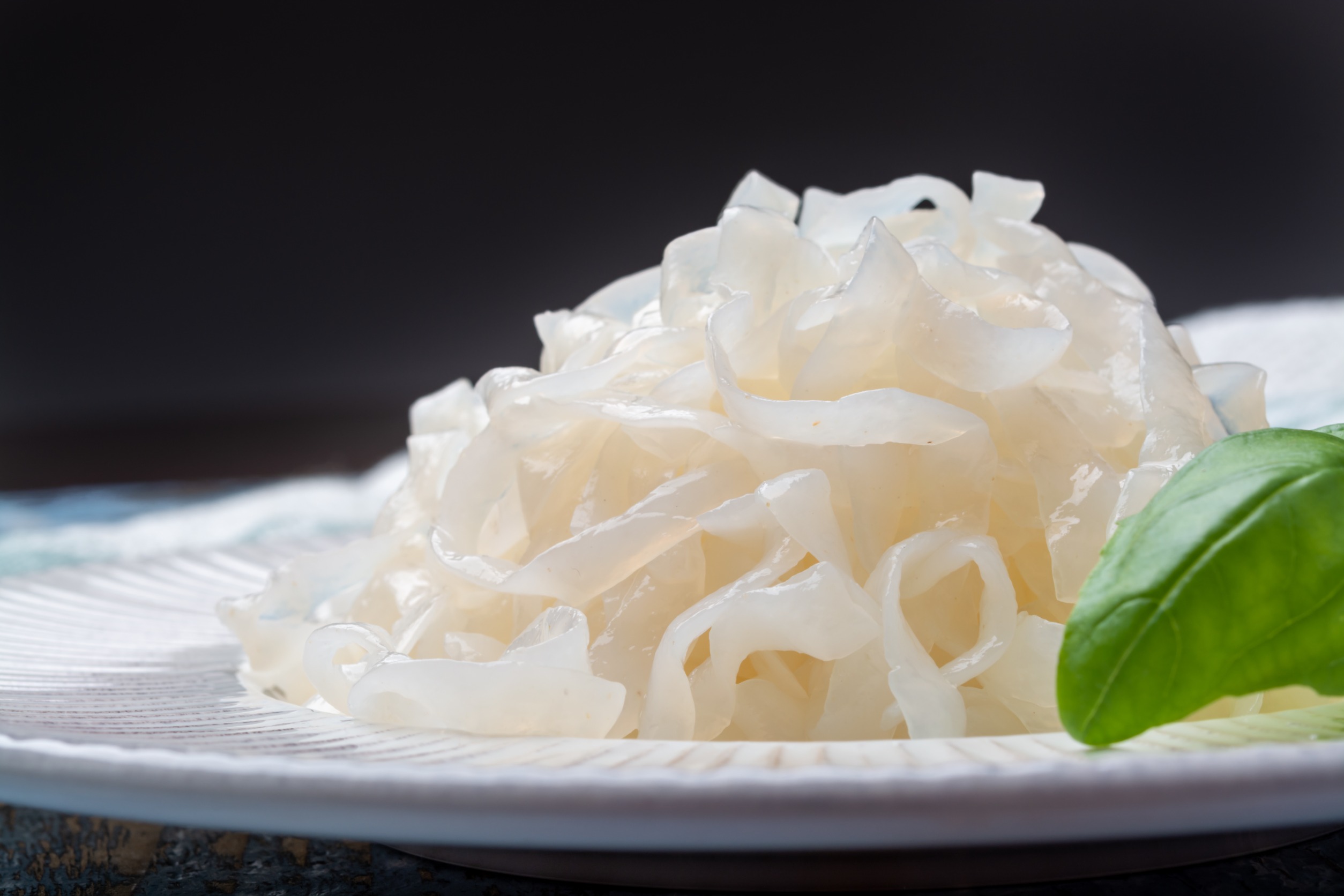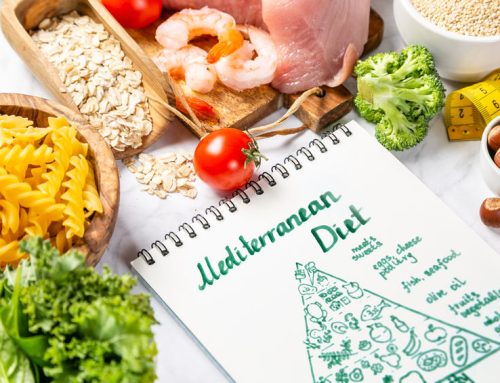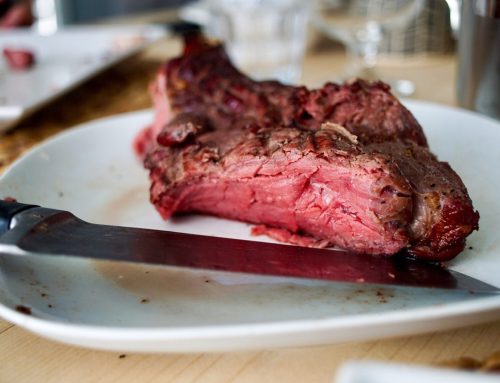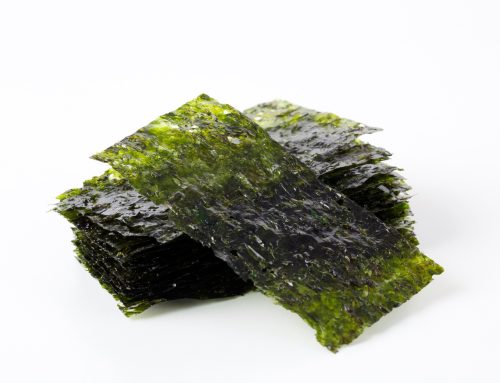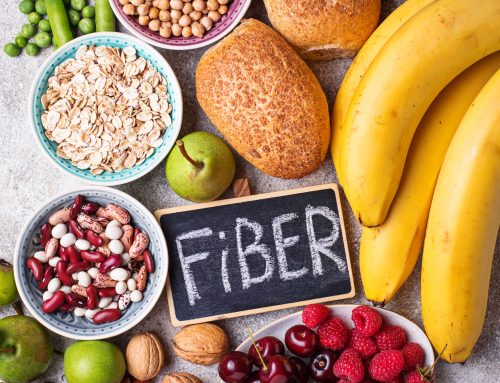Wondering what are shirataki noodles? They are being promoted as “The Zero-Calorie ‘Miracle’ Noodles.”
• Shirataki noodles are noodles that are high in fiber and low in calories. They may provide health benefits, including for your digestive system.
• Shirataki noodles are a unique food that’s very filling yet low in calories.
• These noodles are high in glucomannan, a type of fiber that has impressive health benefits. In fact, glucomannan has been shown to cause weight loss in numerous studies.
This article explains everything you need to know about shirataki noodles, including their benefits and cooking instructions.
What are shirataki noodles?
So, what are shirataki noodles, These noodles are long, white noodles. They are often called miracle noodles or konjac noodles. They’re made from glucomannan, a type of fiber that comes from the root of the konjac plant.
Konjac grows in Japan, China, and Southeast Asia. It contains very few digestible carbs — but most of its carbs come from glucomannan fiber “Shirataki” is Japanese for “white waterfall,” which describes the noodles’ translucent appearance. They’re made by mixing glucomannan flour with regular water and a little lime water, which helps the noodles hold their shape.
The mixture is boiled and then shaped into noodles or rice-like pieces. Shirataki noodles contain a lot of water. In fact, they are about 97% water and 3% glucomannan fiber. They’re also very low in calories and contain no digestible carbs.
High in viscous fiber
Glucomannan is a highly viscous fiber, which is a type of soluble fiber that can absorb water to form a gel.
In fact, glucomannan can absorb up to 50 times its weight in water, as reflected in shirataki noodles’ extremely high-water content These noodles move through your digestive system very slowly, which helps you feel full and delays nutrient absorption into your bloodstream.
In addition, viscous fiber functions as a prebiotic. It nourishes the bacteria living in your colon, also known as the gut flora or microbiota. In your colon, bacteria ferment fiber into short-chain fatty acids, which can reduce inflammation, boost immune function, and provide other health benefits, according to some older research.
• A 2014 human study estimated that fermenting glucomannan to short-chain fatty acids produces 1 calorie per gram (g) of fiber.
Since a typical 4-ounce (oz), or 113-g, serving of shirataki noodles contains about 1–3 g of glucomannan, it’s essentially a calorie-free, carb-free food.
Can support weight loss
Shirataki noodles can be a powerful weight loss tool. Their viscous fiber delays stomach emptying, so you stay full longer and end up eating less.
In addition, fermenting fiber into short-chain fatty acids may stimulate the release of gut hormones that increases feelings of fullness.
What’s more, taking glucomannan before consuming a lot of carbs appears to reduce levels of the hunger hormone ghrelin, according to a 2009 study.
• One meta-analysis found that supplementing with glucomannan significantly reduced body weight in people with overweight or obesity.
• In another study, replacing a high carb preload with shirataki noodles reduced overall calorie intake by 23%–47%, which could potentially result in weight loss.
• However, more research is needed, as some other studies have turned up mixed results.
For instance, one study found that glucomannan supplementation had no significant effect on body weight in children with overweight or obesity.
Can reduce blood sugar and insulin levels
Glucomannan has been shown to help lower blood sugar levels in people with diabetes and insulin resistance.
Because viscous fiber delays stomach emptying, blood sugar and insulin levels rise more gradually as nutrients are absorbed into your bloodstream.
In one small study, eating konjac products (such as shirataki noodles) for 12 weeks led to a significant reduction in fasting blood sugar levels and hemoglobin A1c, a marker of long-term blood sugar levels, in people with type 2 diabetes.
In another study, consuming glucomannan alongside rice gruel helped prevent increases in blood sugar and insulin levels compared to a control group.
May lower cholesterol
Several studies also suggest that glucomannan may help lower cholesterol levels.
Researchers note that glucomannan increases the amount of cholesterol excreted in stool so that less is reabsorbed into your bloodstream.
One meta-analysis found that taking 3 g of glucomannan per day reduced LDL (bad) cholesterol levels by 10% and levels of non-HDL (good) cholesterol by 7%.
May relieve constipation
Many people have chronic constipation or infrequent bowel movements that are difficult to pass.
Some older research suggests that glucomannan could be an effective treatment for constipation in both children and adults.
• One study found that glucomannan supplementation could increase stool frequency in children with constipation. However, it had no significant effect on stool consistency or the rate of successful treatment of constipation.
• Another study showed that glucomannan could help reduce symptoms of constipation in pregnant people by increasing the frequency of bowel movements and improving stool consistency.
Potential side effects
For some, the glucomannan in shirataki noodles may cause mild digestive issues, such as loose stools, bloating, and flatulence.
More serious side effects have also been reported, especially when shirataki noodles are consumed in large amounts. For instance, in one case study, a woman developed a stomach obstruction after eating an entire pack of konjac flour noodles.
Still, glucomannan is generally safe when enjoyed in moderation. Nevertheless — as is the case with all fiber — it’s best to introduce glucomannan into your diet gradually.
In addition, some older research suggests that glucomannan may reduce the absorption of certain medications. A doctor or pharmacist can provide guidance on whether you should adjust the timing of your medications if adding shirataki noodles to your diet.
Click here to learn more about shirataki noodles.


